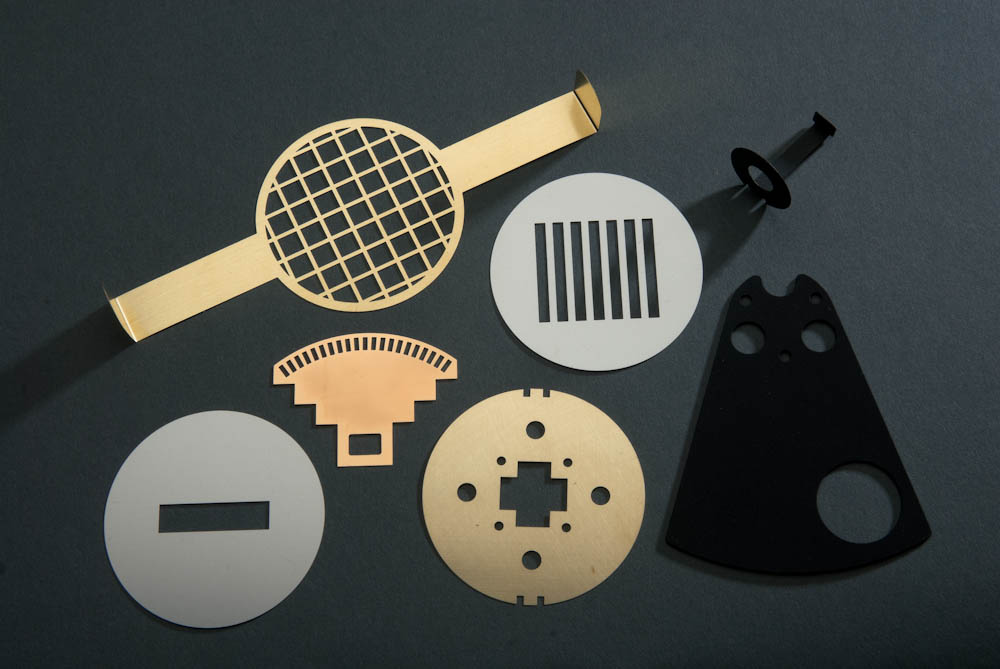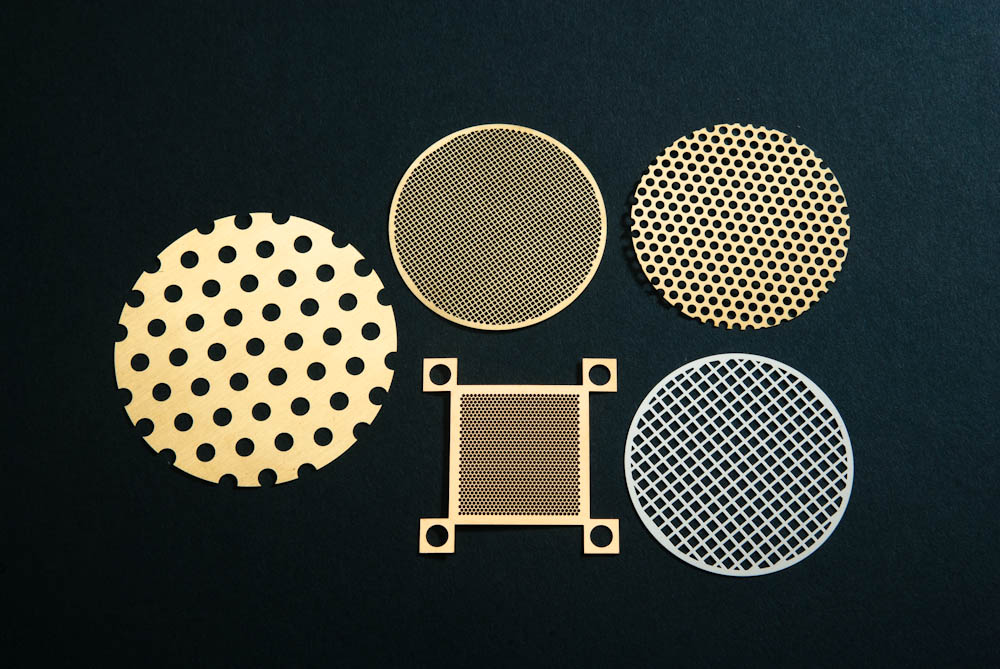Everyday Objects That Use Photochemical Etching
Photochemical etching is a highly efficient and economical process used to make many common parts and objects. Every day, the general public uses and encounters a wide range of products created through photochemical etching. This process goes by several alternative names, including photochemical milling, photo etching, chemical machining, and metal etching.
Metal etching retains hardness, temper, magnetic permeability, and other qualities without causing excessive stress on the material. A photoresist material—created from CAD drawings representing the customer’s design—protects the metal to be preserved, while acidic etchants dissolve the unwanted material. The etchants used in photochemical machining depend on the base material used.

Photo etching does not leave behind any burrs, sharp edges, damage to part edges, or undesired material. It is also used to create very thin, flat parts with tight tolerances.
Applications of Chemical Machining
United Western Enterprises, Inc., can machine metal to as thin as .0003”, with holes as small as .004”, and it can produce center to center dimensional tolerances of +/-.0005” regardless of material thickness.1 These capabilities are especially useful in optical applications, such as creating precision apertures. Since there are no burrs, the size and shape of openings and part flatness are not affected.
Many parts such as apertures can be created at once, speeding up the machining process and reducing lead times. Using aluminum, stainless steel, Kovar, phosphor bronze, beryllium copper, and various copper alloys, we can use photochemical machining for apertures used in:
Electronics
- Image sensors
- Attenuators
- Digital cameras
- Waveform samplers
Medical Equipment
- Microscope objectives
- Imaging equipment
Aerospace
- Radar
- Telescopes
- RF signal collectors

Photochemical etching is also used for apertures and devices found in military weapons and defense systems, such as fuel/hydraulic filters and noise reduction equipment. In addition, this process aids in the creation of various parts and components found in products we use every day, including electronics and microelectromechanical devices. These include photo etched covers, connectors, electrical contacts, electromagnetic and radio frequency shielding, bus bars, and heat sinks. Here is a closer look at some more metal parts that can be photo etched:
- Battery components: Metal parts such as anodes, cathodes, and current collectors can be chemically machined, as can parts for fuel cells, as well as rotors and stators for motors.
- Springs/Contacts: Battery tabs, leaf springs, clip-on/board-mounted battery contacts, antennae, medical implants, contact springs in military aircraft, and connectors that can withstand the harsh conditions of space.
- Electronics parts: Semiconductor leadframes, metal gaskets, seals, micro contacts, encoders, washers, and perforated metal mesh screens. Tiny filters produced with this process are commonly fitted in RFI filters, water filtration equipment, and speaker grilles.
- Shims: Shims as thin as .0003” can be produced in various shapes and configurations for use in printed circuit boards, medical devices, and fuel systems.
- Medical equipment: Photo chemical etching can be used to make surgical blades, and various other metal tools and supplies used in the medical, surgical, and dental fields. This process is used to craft tiny metal screens that are integrated into medical sensors, monitoring devices, and surgical needle threaders. Medical batteries also utilize photoetched anodes and cathodes.

Common Objects with Components Created by Photochemical Etching
It should be clear by now that photochemical etching can be used to manufacture many kinds of components. Here are just a few of the more common applications that benefit from this process:
- Automobiles – The modern road vehicle usually features a number of components that have been crafted by the photo etching process. These include speaker grilles, electrical contacts, ABS flexures (for anti-lock braking systems), GDI flexures (for gasoline direct injection systems), clutch springs, encoder disks, fuel cell plates, nameplates, and more.
- Airplanes – They rely on many components crafted with photo etching: heat exchangers, air intake grilles, connectors, springs, diaphragms, and other devices.
- Hearing aids – These devices benefit from photo etched micro contact springs, crafted in a highly accurate stress-free and burr-free process, that are embedded in their printed circuit boards.
- Pacemakers – Used to treat arrhythmia (irregular heartbeat), pacemakers come with photo etched EMI/RFI shielding, which eliminates potentially harmful electromagnetic interference. They also commonly contain cathode battery grids that are created through this process as well. Photochemical etching also plays a part in the manufacture of various other types of medical implants, such as cranial meshes and orbital plates.
- Microwaves – The staple of every middle-class home, the microwave contains photochemically etched circuits as well as gaskets, screens, electrical contacts, and EMI & RFI shielding cans.
- Cell phones – These ubiquitous mobile devices also benefit from the photochemical etching and its ability to produce EMI/RFI shielding and precisely fitted enclosures.
- Squeegee blades – Essential components of floor scrubbing machines and surface mount screen printing equipment, these handy devices are among those products shaped by photo etching.
Furthermore, many types of household appliances and equipment use shims that have been created by the photochemical etching process. Unlike standard punching dies, photo etching is capable of creating washers without leaving any burrs behind. For this reason, photochemical etching can significantly speed up manufacturing times and reduce production expenses when compared with traditional methods of producing washers.
Photochemical Etching with United Western Enterprises, Inc.
At United Western Enterprises, Inc., we are experienced at photo etching many types of metal. We produce apertures, shielding, shims, battery contacts, fine screens, battery contacts, and covers and lids according to customer specifications. Employing the latest photochemical machining equipment, we can produce custom parts in high volumes at extremely tight tolerances.
In addition to etching metal parts, we offer in-house forming, laser welding, and soldering and will take responsibility for heat treating, and plating services. Parts can be finished or coated in nickel, tin, silver, or gold. We can offer anodizing and chemical filming as well. If you would like more information about the parts we etch, our technical specifications, and their applications, please be sure to explore the other sections of our website. You may also reach out to us directly. Call (800) 964-6461 or email sales@uweinc.com today, or feel free to contact us or request a quote online.
Sources
